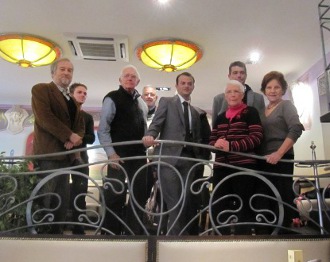The public inquiry on the implementation of Tram Line 2 has raised quite a few questions. Europe Ecology – The Greens, through Mari-Luz Hernandez-Nicaise, municipal councillor of the city of Nice, explains the “statements” submitted during the public inquiry. EELV has indeed noted many gray areas: between missing files and nonsensical issues, the T2 line seems far from being constructed.

The Tramway is a social tool that should allow people to use cars less and thereby reduce the resulting nuisances. This is how Mari-Luz Hernandez-Nicaise and her Europe Ecology – The Greens team see the Tramway. “We want to be clear, we are for the Tramway,” adds the municipal councillor. In that case, what do they criticize about this T2 Line?
Assessment of line T1
Several problems were raised by Mari-Luz Hernandez-Nicaise and EELV.
First of all, the assessment of the implementation of line T1 is not present in the file. This absence is likely to invalidate the inquiry, as an assessment of the economic and social results must be established no later than 5 years after service launch (November 2007), and must be made public. “And let’s not forget that line T1 is not yet completed,” adds the municipal councillor.
West Terminus
Concerning the termini, the EELV team partly questions the construction of a link to the airport from Saint-Augustin. It is planned that one in three trams will not head towards the Nikaïa terminus but towards the airport. According to them, this solution benefits neither the airport, as departures towards it would not be frequent enough, nor people wanting to go to Nikaïa, who will have to wait nearly 10 minutes for a new tram to arrive. “It would be more wise to implement shuttles from the Saint-Augustin station, paid for by the airport, like the Orlyval. This would reduce the cost of this line and allow for other truly necessary developments,” they explain.
East Terminus
On the other hand, the East terminus seems nonsensical to them. “Placing the East terminus at the Port amounts to excluding the Riquier district, which includes nearly 12,000 people!” specifies Mari-Luz Hernandez-Nicaise. “Logically, the route should be extended to the Riquier station. In terms of traffic, it is the 5th busiest station in the department.” Nearly 1.3 million people use this station every year, according to the French Rail Network. “It’s a design error in public transport! The Thiers station is already not connected to line T1.” According to EELV, it would be possible to separate the tracks: the uphill track would go through Riquier Boulevard, and the downhill track via Arson Street. This solution would notably prevent blocking the heavy traffic using this route. In terms of cost, this extension “would be marginal compared to the entire project, especially as it would meet a strong demand. It would thus be amortized by the 12,000 potential users of Riquier.”
T1/T2 Connection
Lines T1 and T2 will not be connected! Two connections are planned, “but they are very poorly designed!” announces Mari-Luz Hernandez-Nicaise. “For instance, at Garibaldi, one will have to cross the entire square diagonally to connect the two stations.” Indeed, connections will not be easy due to their locations, as well as the transition from an underground line to a surface line. And this problem raises another: the underground section.
Geology
The subsoil of Nice is crossed by different watercourses. With the construction of an underground Tramway, these watercourses will be diverted. These diversions will affect the groundwater level: the variations due to this construction will add to climatic variations. “This therefore constitutes a danger for basements already flooded or near flooding, as well as for old buildings (the foundations could be weakened, ed. note),” explain the members of EELV. “All the low points of the city constitute critical areas in case of natural events.” Considering the constitution of the soil in Nice, “a geological study was carried out, but the summary made from the boreholes on the geology and lithology of the route was not attached to the inquiry!” adds Mari-Luz Hernandez-Nicaise.
Construction Sites and Pollution
Furthermore, this underground passage will lead to heavy open-air construction sites. There will be three tunnel boring machine entry points and the construction sites for the three stations. “The Grosso entry point will measure 6,000m², with a sludge treatment plant (3 silos of 15m high, editor’s note) and a mortar plant (5 tanks of 8m high, editor’s note),” explain the small team. “These installations will generate even more significant and more lasting problems than the creation of a surface line!” All this without even counting the number of trucks that will transit on the roads.
This burying results in an estimated additional cost of 300 million euros. This cost has led the designers to space out the stations. These distances would be acceptable for a subway, but not for a Tramway (they will be more than 400m apart, editor’s note). “A part of the neighborhoods crossed will therefore not be served.”
EELV’s Wishes
EELV is therefore asking the municipality to review its project, to make it practical and financially affordable. This request is based on four points:
- – the removal of the underground section,
- – the implementation of at least one connection with line T1,
- – the extension to the Riquier station,
- – the removal of the airport link.
“Moreover, there is a real contrast between the cost and the state of the city’s finances,” concludes Mari-Luz Hernandez-Nicaise.



